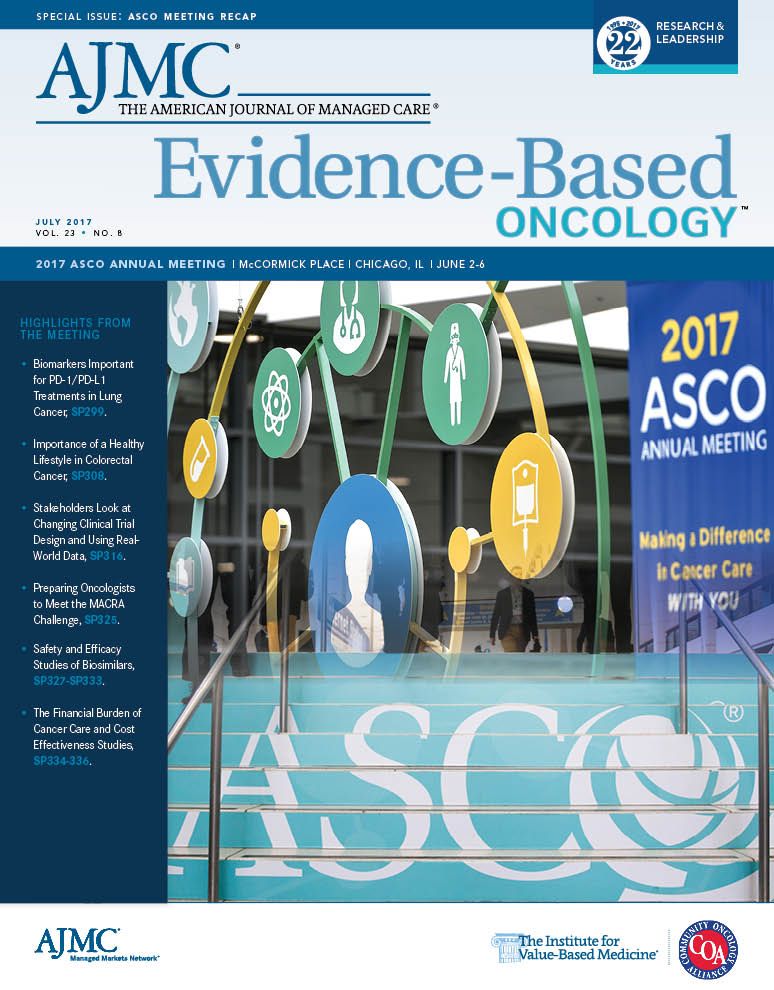- Center on Health Equity & Access
- Clinical
- Health Care Cost
- Health Care Delivery
- Insurance
- Policy
- Technology
- Value-Based Care
SEER-Medicare Database Analysis Notes Higher Resource Utilization Among Patients With Neuroendocrine Tumors
In a study presented at the 2017 American Society of Clinical Oncology Annual Meeting, researchers at MD Anderson Cancer Center used data on 12,052 elderly patients diagnosed with neuroendocrine tumors to analyze their resource utilization.
NEUROENDOCRINE TUMORS (NETs)
are diagnosed in over 12,000 people in the United States each year,1 and survival varies by tumor type and location, among other factors.
A previous study found a significant increase in resource utilization among patients with advanced NETs, independent of the NET tumor site.2 However, in that study, patients with pancreatic NETs had a higher rate of surgical procedures compared with those who had gastrointestinal tract or lung NETs; chemotherapy use was higher in the GI tract/lung NET population.
In the current study,3 presented at the 2017 American Society of Clinical Oncology Annual Meeting, researchers at MD Anderson Cancer Center used data on 12,052 elderly patients diagnosed with NETs between January 2003 and December 2011 using ICD-O-3 codes from the Surveillance, Epidemiology and End Results Medicare database, with continuous Medicare Parts A and B enrollment during a 1-year period prior to NET diagnosis. Propensity score matching was used to identify a group of comparable elderly patients from a noncancer Medicare cohort as the control sample.
Potentially relevant conditions (defined as a greater than 1 indicative claim), resource utilization, and costs from patients’ medical claims were documented for the 1-year period before diagnosis. To calculate resource utilization, the authors examined the number of outpatient visits, emergency department (ED) visits, and hospitalizations. Healthcare costs included inpatient, outpatient, and total costs.
The study found a higher likelihood of diarrhea (8% vs 2%), abdominal pain (37% vs 8%), irritable bowel syndrome (1.5% vs 0.6%), hypertension (72% vs 55%), heart failure (16% vs 8%), and peripheral edema (7% vs 4%) in the NET cohort compared with the non-cancer control group, respectively. Patients with NETs also had more outpatient visits (mean, 27.25 vs 18.45) and a higher percentage of ED visits (64% vs 36%) and hospitalizations (66% vs 34%).
Concurrently, patients with NETs had a significant increase in total (mean, $32,924 vs $10,048), outpatient (mean, $8869 vs 4580), and inpatient costs (mean, $24,055 vs $10,048) compared with the control cohort (all P <.001).
Based on their results, the authors conclude that patients with NETs incurred higher resource utilizations and costs in the year preceding the diagnosis of an NET.REFERENCES
1. Neuroendocrine tumor: statistics. Cancer.Net website. cancer.net/cancer-types/neuroendocrine-tumor/statistics. Accessed June 20, 2017.
2. Strosberg J, Casciano R, Stern L, et al. United States-based practice patterns and resource utilization in advanced neuroendocrine tumor treatment. World J Gastroenterol. 2013;19(15):2348-2354. doi: 10.3748/wjg.v19. i15.2348.
3. Shen C, Chu Y, Dasari A, et al. Pre-existing symptoms, resource utilization, and healthcare costs prior to diagnosis of neuroendocrine tumors: a SEER-Medicare database study. J Clin Oncol. 2017;35(suppl; abst 4092).

Trends in Hospital Pricing for Vulnerable Emergency Department Users, 2021-2023
December 4th 2025Self-pay emergency department prices rose significantly from 2021 to 2023, especially at for-profit and system-affiliated hospitals, highlighting growing affordability challenges for uninsured and underinsured patients.
Read More
Exploring Racial, Ethnic Disparities in Cancer Care Prior Authorization Decisions
October 24th 2024On this episode of Managed Care Cast, we're talking with the author of a study published in the October 2024 issue of The American Journal of Managed Care® that explored prior authorization decisions in cancer care by race and ethnicity for commercially insured patients.
Listen
Integrated Care for Chronic Conditions: A Randomized Care Management Trial
December 3rd 2025The authors sought to understand the differential impact of payer-led community-based care management approaches on stakeholder-oriented outcomes for publicly insured adults with multiple chronic conditions.
Read More

